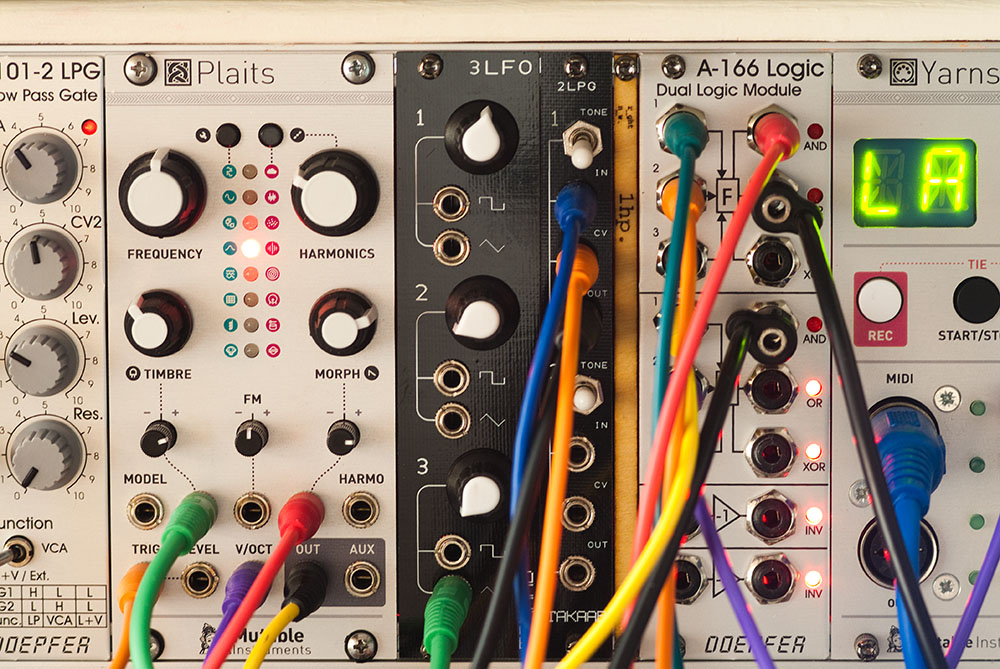Let's fire up the modular synthesiser again, and chase away a rainy day.
The track at the top of this article was performed with the Odyssey pictured above (it played the strings in the background) and Mutable Instruments' Plaits, which is in the middle of the top row of the modular case. Plaits has a clever guitar-string simulator that resembles 2HP's Pluck, but with more modulation options.
Not pictured is a Mac Mini, a bunch of effects, a MOTU 828 audio interface, and an old copy of Logic Express 9. And a pair of Arturia Beatsteps, which I used to sequence the notes. The Beatstep is a simple 16-step pattern sequencer that has a mixture of CV/Gate and MIDI outputs:
How does a logic module work? Have a look at this fancy table:
That's what the internet looked like when I was young. It's what
computer games looked like when I was young. But, still. Logic gates.
If two triggers coincide the logic module
spits out a trigger from the AND output. Alternatively if there are triggers in pattern one or pattern two, the logic module spits out a trigger
from the OR output.
It dawns on me that the A-166 doesn't have a NOT gate. It has a XOR gate
instead, which is an acronym for "eXclusive OR". AND and OR and NOT aren't
acronyms, by the way. They're words. I wrote them in capitals to emphasise
them. Not because they're acronyms.
XOR gates differ from OR gates in that they only generate a pulse if either
one or the other input is active, but not both. In the diagram above it would
generate a pulse at step 2, for example, but not steps 1 or 4.
Why bother with a logic gate? If the result of combining pattern one with pattern two is pattern three, why not just play pattern three in the first place? Logic gates are useful for modulating a sequence with a second sequence. In the case of the song at the top of the page the
note pitches are generated with one Beatstep, but the notes are
triggered by a separate, random pattern from the second Beatstep, fed through the
logic gate. The result is a guitar melody that runs through the same set of
notes, but with endlessly variable plucking. And because the two sequences were running out of sync, there are occasional note bends where the steps didn't align.
The second element of the track is a typical space reverb pad, which I generated by feeding my Odyssey through a mixture of a Strymon El Capistan
delay pedal and a big reverb plug-in. This tune has a similar idea, but with a
chunky bassline:
Will the weather improve? No, according to the weather report it will not.






